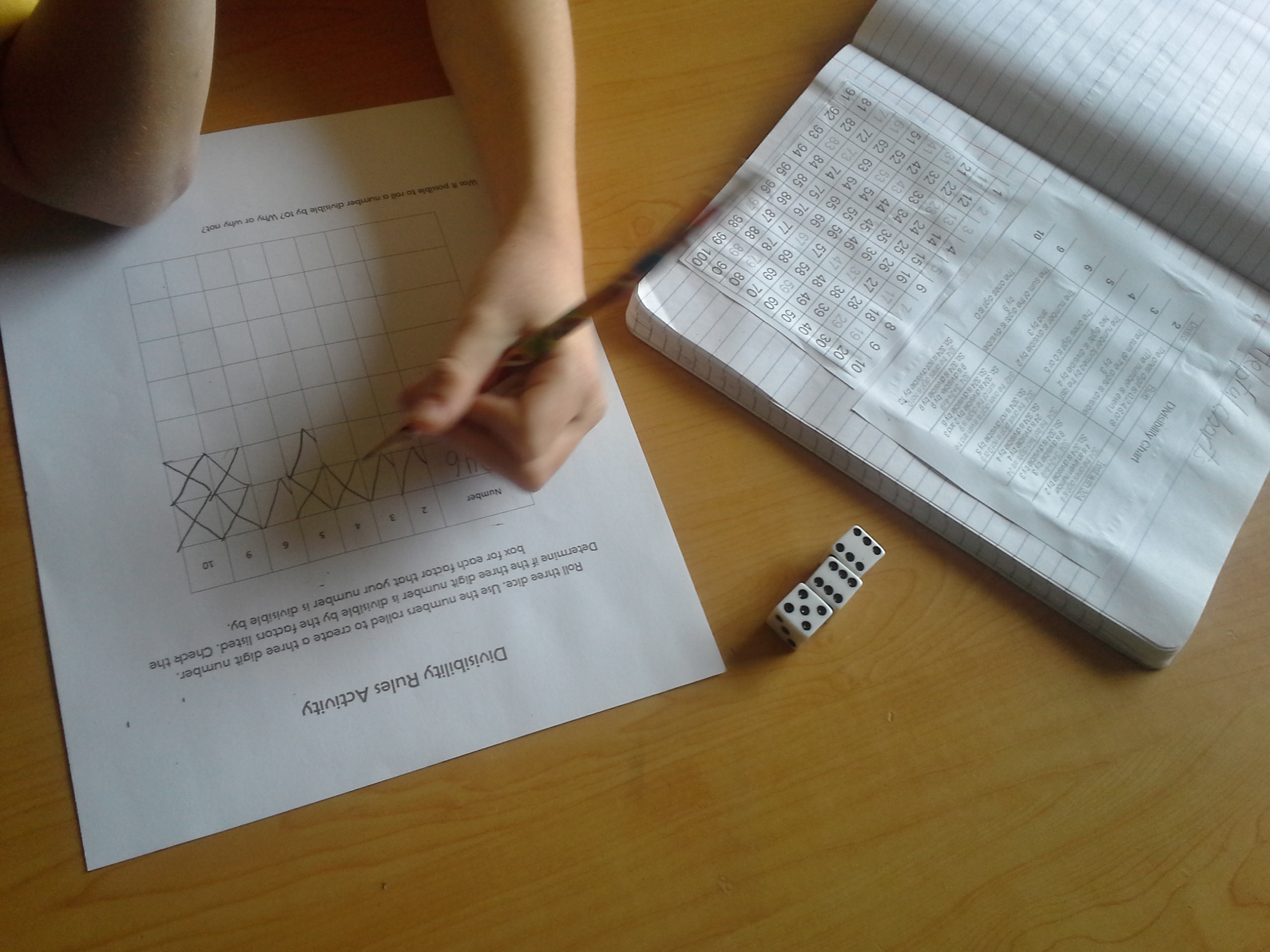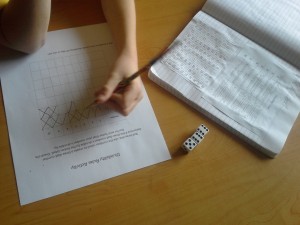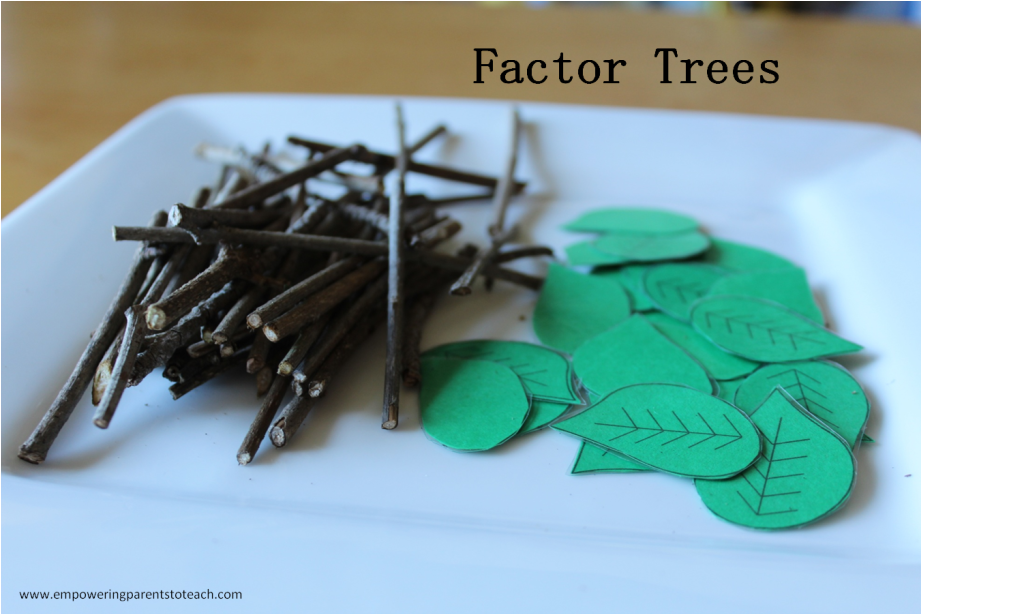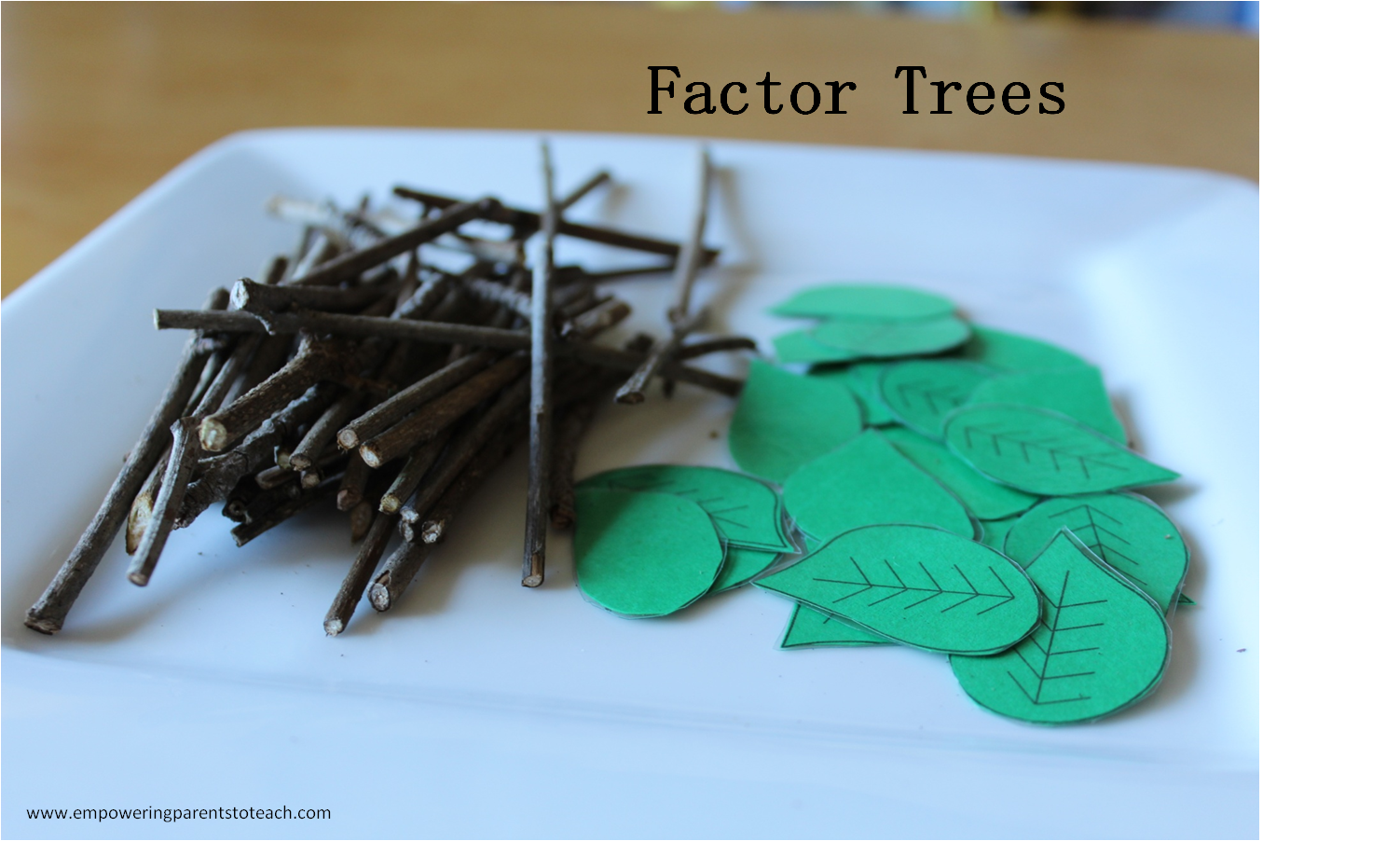Do you remember making factor trees when you were younger? You started with a number and began breaking it into factors until you reached all prime numbers. The factor tree was a way of finding the prime factorization of a number.
It looked like this:

I decided to make this idea a little more hands on by making factor trees with leaves and sticks.
Materials:
- Printable leaves (click here for the FREE printable in Green or B&W)
- Sticks (I collected mine from outside and cut them to be roughly the same length)
- Whiteboard marker or pencil
Activity:
1. Print out the leaves in color. Or, if you are like me and have a printer that refuses to print color, print the black and white leaves on green cardstock.
2. Laminate the leaves if possible. Your child can write on the leaves with the whiteboard marker and erase when finished, allowing you to use the materials as many times as you want. If you don’t laminate the leaves, your child can simply write on the leaves with pencil, pen, or marker. Just be sure to print enough leaves, since you can not reuse them if they aren’t laminated.
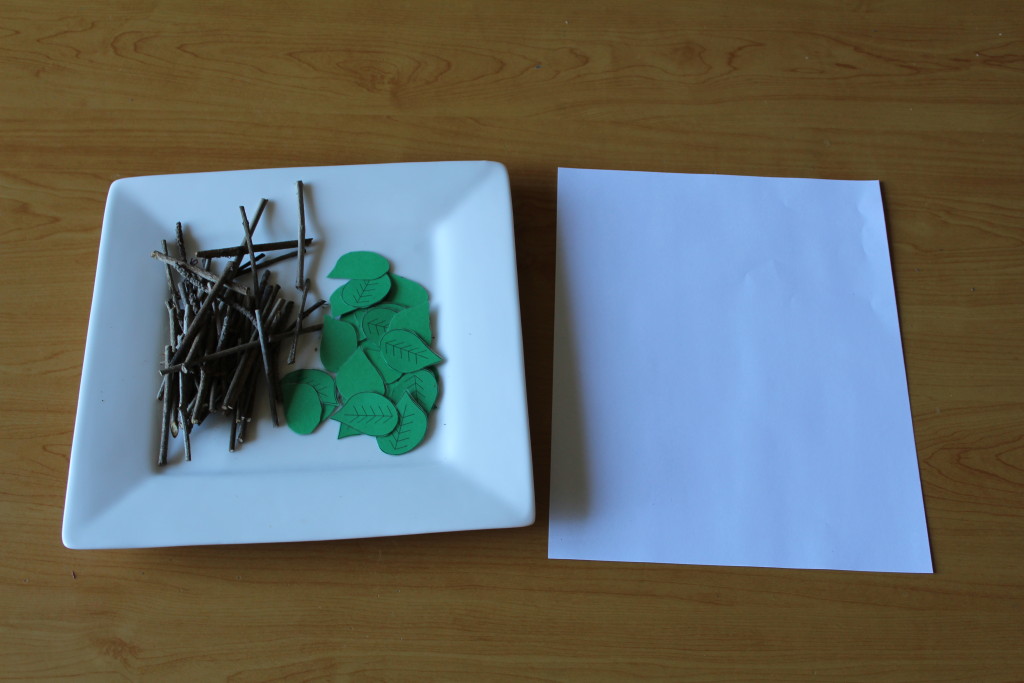
3. Take out one leaf and write a composite (not prime) number on it. For demonstration purposes, I will use 45 as the example number. On the leaf I would write 45 and place the leaf on the working surface (floor, table, or paper) with enough room underneath the number to work down.
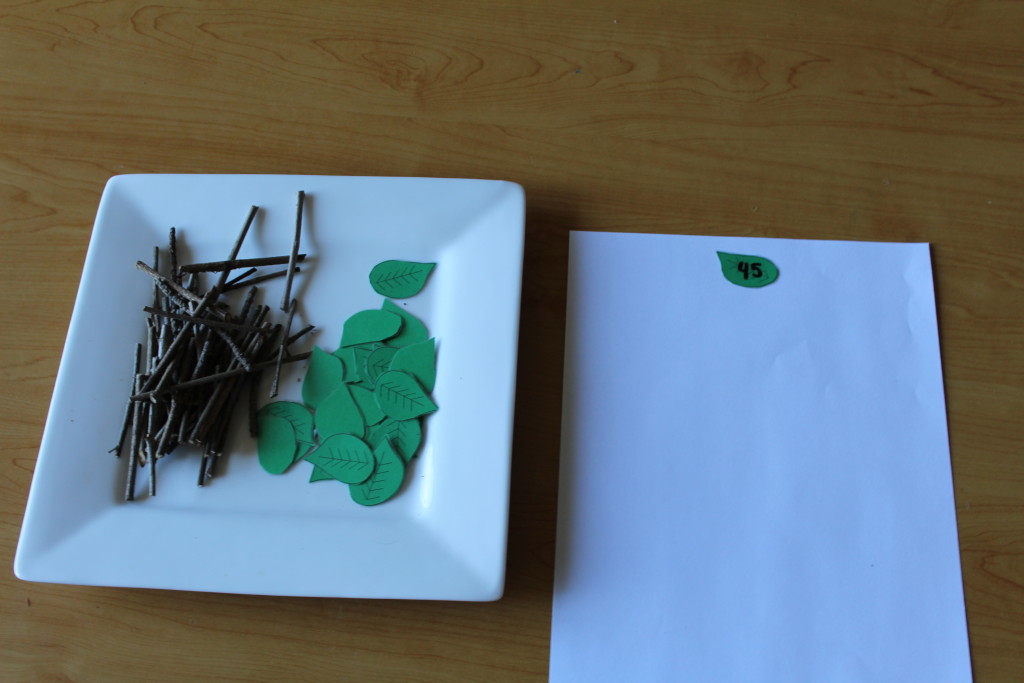
4. Have your child name two factors of the number, excluding one and itself. For example, with 45 your child might say, “9 and 5″ or “3 and 15″. Choose only one set of factors.
5. Show your child the sticks and tell him or her to place two sticks under the 45 to show that we are splitting the 45 into two factors. In this case, we will use 9 and 5. Next, have your child take two leaves and write the factors on the two leaves. Write one factor per leaf.
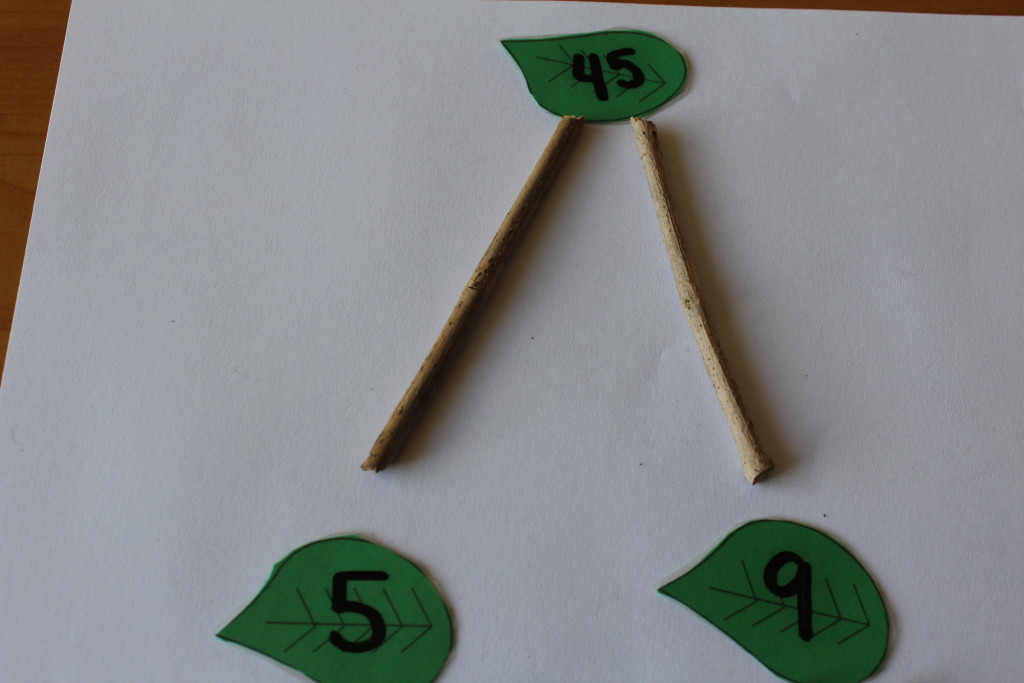
6. Ask your child if any of the numbers that s/he just wrote can be broken down further. Your child should notice that the 9 can be broken down into 3 and 3. Repeat the process of placing sticks and leaves.
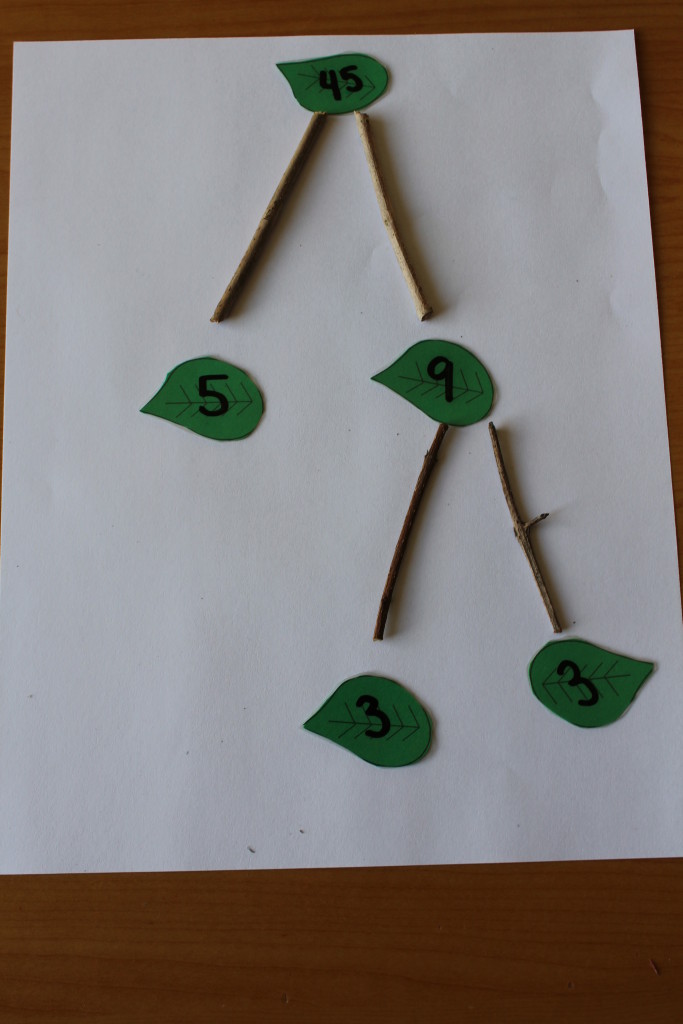
7. Once again, look at the numbers and determine if any of the numbers can be broken down into two factors. In this case, all the numbers are now prime. The process is done. Depending on your starting number, the process may be longer.
8. Explain to your child that once they have reached only prime factors, they have found the prime factorization of the number. Have your child list the prime numbers that s/he ended with. In our example, it would be 3,3,5.
9. Show your child how we can write that as 3x3x5. If your child is comfortable with exponents, show him or her how to write the prime factorization as 32 x5. Have your child do the multiplication of 3x3x5 to clearly illustrate how the prime factorization is still the same value of 45, it’s just written differently.
10. Continue the procedure with more numbers. Keep working for as long as your child is interested. Note: If this activity is too challenging, your child may need to review factors, or prime and composite numbers. Click here for an activity to teach prime and composite numbers.
11. If your child keeps a math notebook, have him or her record one of the factor trees in the notebook. Be sure to write out the prime factorization too. This will serve as a reference and provide practice with writing factor trees in the standard format (as seen above). Another option would be to have your child paste a stick and leaf factor tree into the notebook (substituting the sticks for pencil lines).
Have fun 
Try these activities:

Click here for the Divisibility Rules Activity
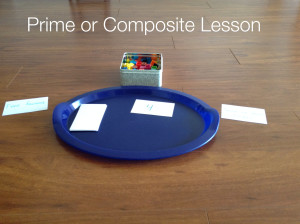 Click here for the Prime or Composite Lesson
Click here for the Prime or Composite Lesson
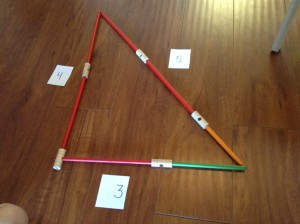 Click here for the Pythagorean Theorem Activity
Click here for the Pythagorean Theorem Activity
![]()

